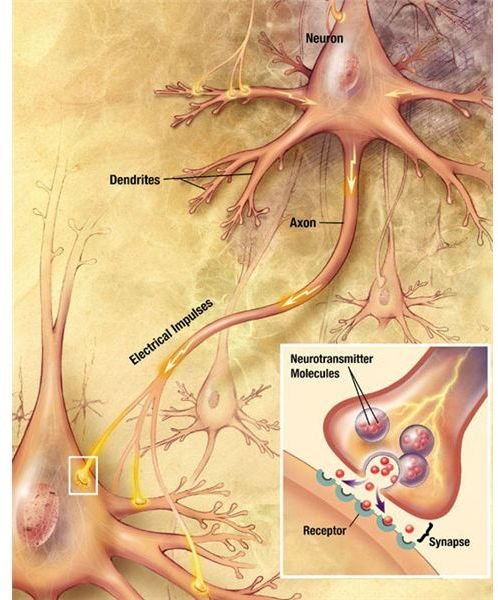Brain Chemistry and Neurotransmitters: A Study Guide
What Makes Something a Neurotransmitter?
The main thing to remember about neurotransmitters is that they are chemicals in the brain that are highly involved in brain function. You may have already heard of some before. Does serotonin or dopamine sound familiar? Both of these are important neurotransmitters.
So what is a neurotransmitter exactly? They must meet the following criteria:
- “The chemical must be produced within a neuron.”
- “When a neuron is stimulated (depolarized), a neuron must release the chemical.”
- “After a chemical is released, it must be inactivated. Inactivation can be through a reuptake mechanism or by an enzyme that stops the action of the chemical.”
- “The chemical must be found within a neuron.”
- “When a chemical is released, it must act on a post-synaptic receptor and cause a biological effect.”
- “If the chemical is applied on the post-synaptic membrane, it should have the same effect as when it is released by a neuron.” — University of Washington
List of Neurotransmitters in the Brain
Neurotransmitters can be divided into two types: small molecule neurotransmitters and neuropeptide neurotransmitters. The small molecule neurotransmitters can be further divided into amino acids and biogenic amines. An exception is nitric oxide (NO), which is a soluble gas. When studying, it would help to divide the neurotransmitters into groups, such as:
Small Molecule Neurotransmitters: Amino Acids
- Gamma aminobutyric acid (GABA)
- Glycine
- Glutamate
- Aspartate
Small Molecule Neurotransmitters: Biogenic Amines
- Dopamine
- Serotonin
- Norepinephrine
- Histamine
Small Molecule Neurotransmitters: Other
- Acetylcholine (acetic acid)
Neuropeptide Neurotransmitters
- Angiotensin II
- Corticotropin
- Corticotropin Releasing hormone
- Vasopressin
- Beta-endorphin
- Substance P
- Bradykinin
- Neurotensin
- Somatostatin
- Cholecystokinin
- Gastrin
- Secretin
- Oxytocin
As you can see, there are many neuropeptide neurotransmitters, more than are listed here. Check with your teacher as to which neuropeptide neurotransmitters will be tested, which may not be included in the above list.
How Neurotransmitters Work
When studying how neurotransmitters work, break it down into the different steps:
- Creating the neurotransmitter in the cell body (soma)
- Storing the neurotransmitter in the vesicle
- Merging of vesicle and axon terminal membrane → release of neurotransmitters
- Binding of the neurotransmitter to its receptor (neurotransmitters can only bind to their specific receptor)
- Inactivating of the neurotransmitter
- Diffusion: the neurotransmitter moves away from synaptic cleft so it cannot be used
- Enzymatic degradation: enzyme changes the neurotransmitter so it cannot be used
- Example: acetylcholine (degradation by acetylcholinesterase) → acetate + choline, which cannot be used by the acetylcholine receptor in the synaptic cleft
- Glial cells: removal from synaptic cleft
- Reuptake: taken back into axon terminal with the neurotransmitter fully intact
- Examples: dopamine, norepinephrine and serotonin are all inactivated through reuptake
Read the lesson plan that accompanies this study guide.
References
- Image Credit: Chemical Synapse Schema Cropped by the National Institute on Aging under the Public Domain
- University of Washington: Neurotransmitters and Neuroactive Peptides, http://faculty.washington.edu/chudler/chnt1.html
- Lundbeck Institute: Neurotransmitters, http://www.brainexplorer.org/neurological_control/Neurological_Neurotransmitters.shtml
This post is part of the series: All About the Human Brain
Study up on the human brain, from basic anatomy to neurotransmitters and left vs. right brain thinking. Our science study guides provide all the hints you need to score high on your next test!
